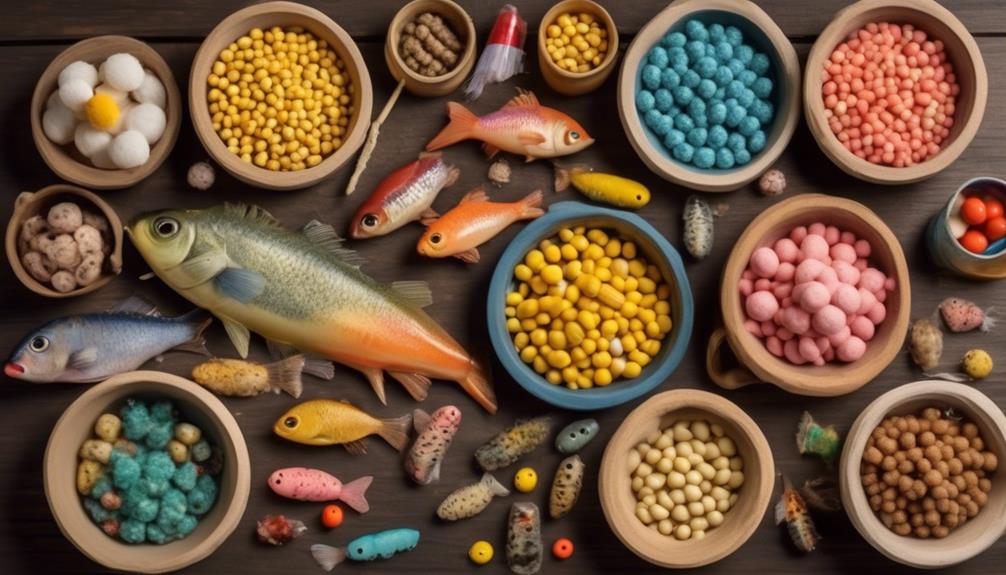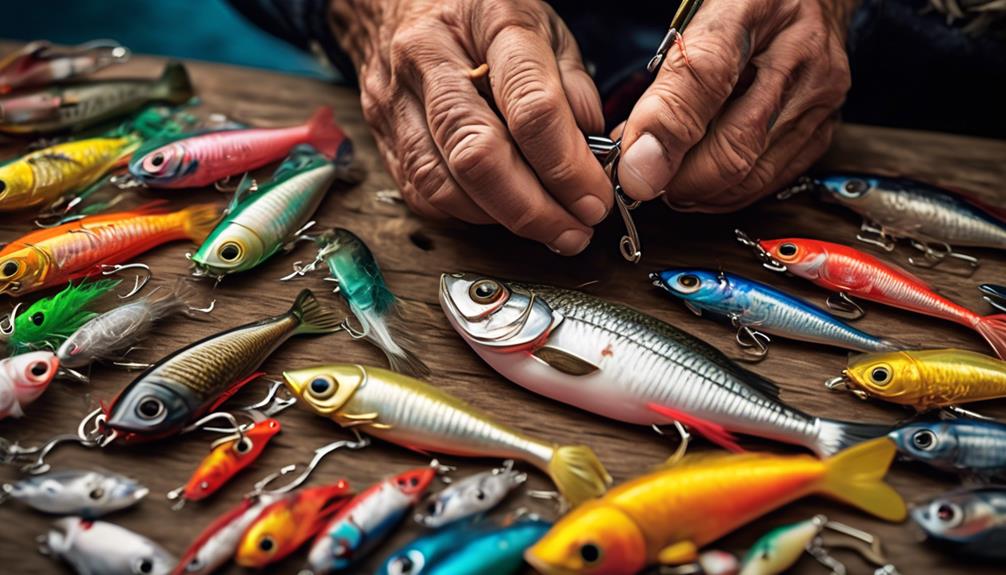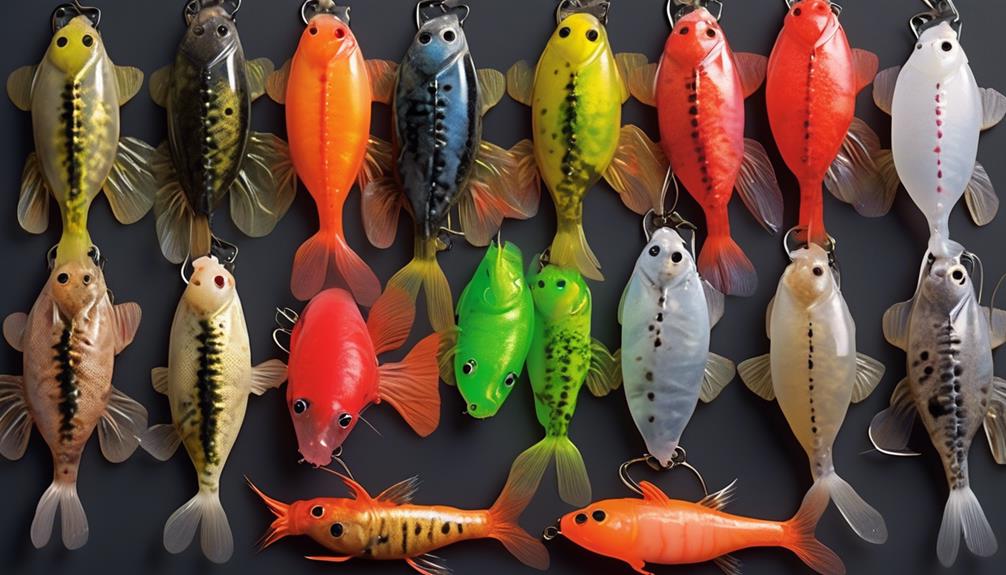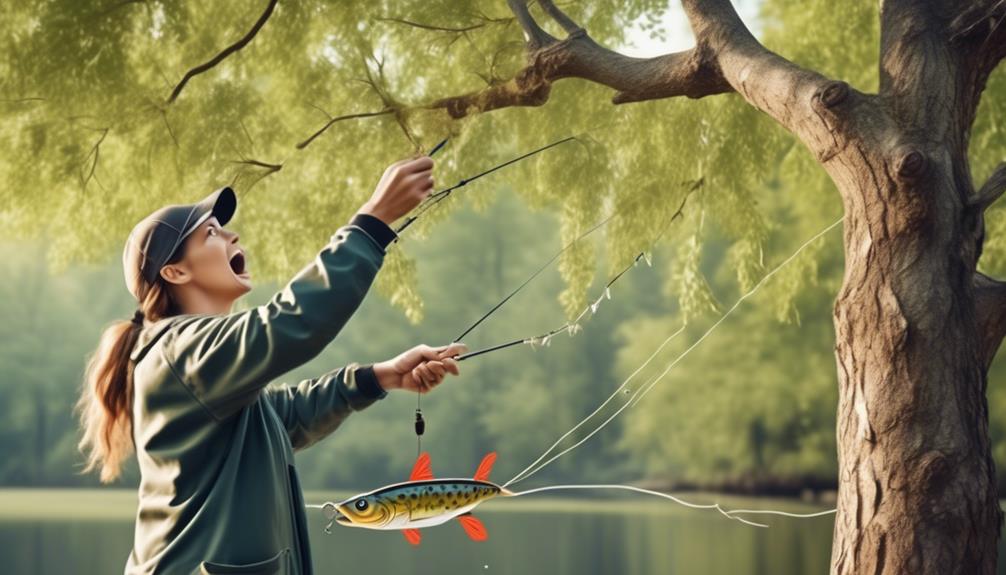Ever wondered if you could make your own fishing bait at home? It turns out there are plenty of options for creating effective homemade bait that could give you an edge on your next fishing trip.
From dough baits to natural bait options, there are numerous techniques and recipes to explore. Whether you're an experienced angler looking to experiment with new bait or a beginner interested in trying your hand at DIY fishing bait, there are plenty of options to consider.
And who knows, you might just discover a secret recipe that will have the fish biting like never before.
Dough Baits
You can easily create dough baits at home using common kitchen ingredients and a few simple steps. One of the great things about dough baits is that there are various alternatives you can use to make them. Some popular alternatives include using cheese, garlic, anise, and even peanut butter to add different scents and flavors to attract specific types of fish. Experimenting with different ingredients can help you find the perfect dough bait recipe for your fishing needs.
When it comes to storing your homemade dough baits, it's important to keep them fresh to maintain their effectiveness. One effective storage technique is to wrap your dough baits tightly in plastic wrap or store them in airtight containers to prevent them from drying out. You can also refrigerate or freeze your dough baits to extend their shelf life. Freezing them in small portions can be especially handy, as it allows you to thaw only what you need for a fishing trip, keeping the rest fresh for later use.
Natural Bait Options
To expand your bait options beyond dough baits, consider utilizing natural alternatives that can also be easily prepared at home using common ingredients. Foraging for bait in your local environment can be a rewarding way to gather natural fishing bait. Look for worms, grubs, or insects under rocks, logs, and in moist soil. These can be an excellent source of natural bait and are often readily available. When foraging, be mindful of the environment and only take what you need.
Using live insects as bait can also be highly effective. Crickets, grasshoppers, and caterpillars are popular choices for catching a variety of fish species. To use live insects as bait, carefully hook them through the body or head, depending on the insect, to ensure they remain lively and attractive to fish. While using live insects may not be suitable for all anglers due to personal preferences or ethical considerations, it's undeniably a natural and effective bait option.
When using natural bait, it's essential to handle it with care to maintain its freshness and effectiveness. Keep natural bait cool and moist, and replace it if it becomes overly soft or discolored. By incorporating foraged bait and live insects into your fishing arsenal, you can diversify your options and increase your chances of a successful catch.
Homemade Fly Lures
Consider experimenting with homemade fly lures as a customizable and cost-effective alternative to store-bought options. Making your own fly lures allows you to tailor the design to mimic specific insects or baitfish found in your local fishing spots, increasing the chances of a successful catch.
To get started, you'll need some basic tying materials such as feathers, fur, thread, and hooks. The key to effective homemade fly lures lies in mastering tying techniques and selecting the right fly patterns.
Tying techniques are crucial for constructing durable and lifelike fly lures. The two most common methods are the 'wet fly' technique, which involves wrapping materials around the hook shank, and the 'dry fly' technique, which creates lures that float on the water's surface. By learning these techniques, you can craft flies that effectively imitate the movement and appearance of natural prey, enticing more bites.
In addition to mastering tying techniques, understanding fly patterns is essential for creating successful homemade fly lures. Different fly patterns are designed to mimic specific types of insects or baitfish. For example, 'streamers' imitate small fish, while 'nymphs' resemble aquatic insect larvae. By studying the behavior of local fish and their prey, you can select or create fly patterns that are most likely to attract the targeted species.
Soft Plastic Baits
When fishing with soft plastic baits, it's important to choose the right type for the specific fishing conditions and targeted fish species. Soft plastic baits offer versatility and can be used to mimic various types of prey. When creating homemade soft plastic baits, consider using alternative materials such as silicone, rubber, or even biodegradable options. These materials can be more cost-effective and allow you to experiment with custom designs to tailor the bait to your specific fishing needs.
Custom designs for soft plastic baits can include adding scents, colors, and shapes that are appealing to the targeted fish species. For example, if you're targeting bass in murky water, you might opt for a darker colored bait with a strong scent to attract the fish. Alternatively, when fishing for trout in clear water, a lighter colored bait with a subtle scent may be more effective. Additionally, experimenting with the shape and texture of the soft plastic bait can help create a more lifelike presentation.
When making your own soft plastic baits, consider the movement and action you want to achieve. You can customize the buoyancy and flexibility of the bait by adjusting the materials and adding weight or buoyant components. By tailoring the soft plastic baits to your specific fishing conditions and targeted fish species, you can increase your chances of a successful catch.
Making Your Own Jigs
Creating your own jigs allows you to customize the weight, color, and design to suit the specific fishing conditions and the behavior of the targeted fish species. Jig customization is a great way to tailor your fishing approach.
Start by selecting the jig weight based on the depth of the water and the current speed. If you're fishing in shallow waters with minimal current, opt for a lighter jig to prevent it from sinking too quickly. Conversely, in deeper waters or areas with stronger currents, a heavier jig will help it reach the desired depth and maintain better control.
When it comes to jig customization, painting is a crucial aspect. Experiment with different colors to see what works best in your fishing spot. Brightly colored jigs are effective in murky water or low-light conditions, while natural hues are suitable for clear waters.
Additionally, modifying the weight of your jigs can be achieved by adding or removing lead weights. This allows you to adjust the jig's sinking rate and overall action, making it more enticing to the fish.
In the end, making your own jigs gives you the flexibility to adapt to various fishing situations. By customizing the weight and painting of your jigs, you can increase your chances of a successful fishing trip.
Using Raw Meat as Bait
If you're looking to attract a wide variety of fish, using raw meat as bait can be an effective and versatile option. Many fish species are naturally attracted to the scent and texture of raw meat, making it a popular choice for anglers. When using raw meat as bait, it's important to consider the preferences of the fish you're targeting. For example, catfish are known to be attracted to strong-smelling meats like chicken liver or cut bait, while predatory fish such as pike or muskie may be enticed by chunks of raw fish or even small mammals like mice.
Understanding the specific preferences of the fish in your area can greatly increase your chances of a successful catch.
However, using raw meat as bait also comes with its drawbacks. One of the main concerns is that raw meat can quickly spoil in warm weather, leading to a potential mess and an unappealing fishing experience. Additionally, using raw meat may attract unwanted scavengers or non-targeted fish species, leading to a potential waste of bait.
It's important to use raw meat as bait in moderation and to properly dispose of any unused portions to avoid environmental impacts.
Creating Homemade Spoon Lures
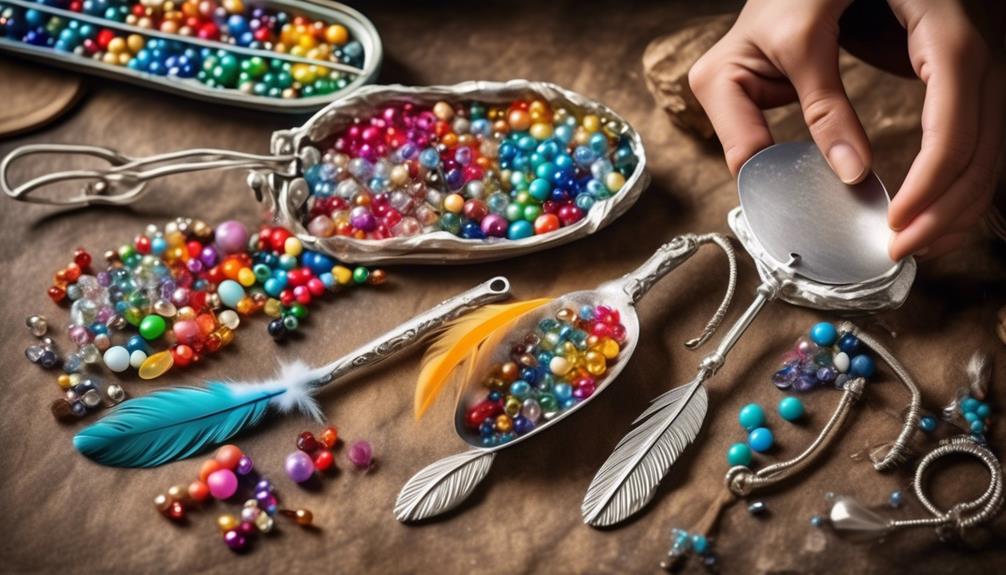
Consider crafting your own homemade spoon lures to attract a wider range of fish with personalized designs and effective bait presentation. Spoon lure design is critical to their success.
When creating homemade spoon lures, you can customize the size, shape, and color to match the specific prey of your target fish. The unique wobble and flash of a homemade spoon lure can be more enticing to fish than store-bought options. To design your spoon lure, you can start with a simple metal spoon as the base and then customize it by adding beads, paint, or tape to create a flashy and attractive appearance. Experiment with different designs to see what works best for the fish in your area.
Choosing the right materials for your homemade spoon lures is essential for their effectiveness. Look for lightweight yet durable materials like aluminum, brass, or copper for the spoon itself. These materials allow for easy manipulation of the spoon's shape and ensure it can withstand the rigors of fishing. Additionally, consider adding hooks, swivels, and split rings to complete your homemade spoon lure. By carefully selecting high-quality materials, you can create spoon lures that aren't only effective but also long-lasting.
Crafting your own homemade spoon lures offers the flexibility to design lures tailored to the specific needs of your fishing environment and target fish. With the right designs and materials, you can create spoon lures that are both effective and personalized to attract the fish you desire.
Innovative DIY Bait Recipes
To expand your homemade fishing bait options, explore innovative DIY bait recipes that complement the personalized designs and effective bait presentations of your homemade spoon lures.
Creative bait alternatives can enhance your fishing experience by attracting a wider range of fish species. One unique baiting technique involves creating a dough bait using simple ingredients like flour, cornmeal, and water. Mix these together to form a dough, and then add flavorings such as garlic, cheese, or anise extract to entice fish with enticing scents. Mold the dough into small balls or nuggets, and let it sit for a while to firm up before using it as bait.
Another creative bait alternative is the use of homemade scented bait. You can make scented bait by soaking raw shrimp, chicken livers, or even hot dogs in a potent mixture of garlic, anise, or other fish-attracting scents. This unique baiting technique adds an extra level of appeal to your bait, making it irresistible to a variety of fish.
Experimenting with unconventional ingredients like marshmallows, cereal, or even gummy candies can also yield surprising results. These offbeat bait options can pique the curiosity of fish and lead to more bites.
Additionally, using natural baits like worms, insects, or small fish can be an effective and environmentally friendly way to attract fish.
Frequently Asked Questions
Can You Use Household Items to Make Homemade Fishing Bait?
You can definitely use household items to make homemade fishing bait. Using fruits, vegetables, and other kitchen staples, you can create effective bait for your fishing trip.
It's a cost-effective and fun way to experiment with different ingredients and find out what works best for attracting fish. Plus, making your own bait can add an extra element of excitement to your fishing adventures.
Are There Any Safety Concerns When Using Raw Meat as Bait?
When using raw meat as fishing bait, it's crucial to consider safety precautions.
Always check local regulations and fishing locations for any restrictions on using raw meat.
To minimize health risks, handle the raw meat with care and avoid cross-contamination.
Keep in mind that using household items in DIY bait may have safety implications, so it's essential to stay informed and follow best practices for homemade bait.
What Are Some Creative Ways to Make Homemade Spoon Lures?
When making DIY spoon lures, you can get creative by using upcycled materials like old spoons or bottle caps. Try painting them in vibrant colors to attract fish. Experiment with alternative shapes to mimic different types of baitfish. This allows you to customize your lures and make them more effective.
Can You Use Unconventional Materials to Create Innovative DIY Bait Recipes?
You can absolutely use unconventional materials to create innovative DIY bait recipes. Get creative and think outside the box when it comes to making homemade fishing bait.
Experiment with different ingredients and crafting methods to come up with unique and effective bait options. By using unconventional materials, you can craft bait recipes that are tailored to your fishing needs and potentially discover new and effective ways to attract fish.
Are There Any Regulations or Restrictions on Using Homemade Bait in Different Fishing Locations?
When fishing in different locations, it's crucial to be aware of regulations and restrictions regarding homemade bait. These rules are in place to ensure the safety of aquatic life and the environment. Some areas may have specific guidelines regarding the use of homemade bait, especially if it involves raw meat.
Always check with local authorities to understand any limitations and to fish responsibly while using homemade bait.
Conclusion
So there you have it – plenty of options for making your own homemade fishing bait. Whether you prefer dough baits, natural bait options, or even creating your own fly lures, there are plenty of ways to customize your bait to attract the fish you're after.
Get creative and experiment with different recipes and materials to see what works best for you.
Happy fishing!
